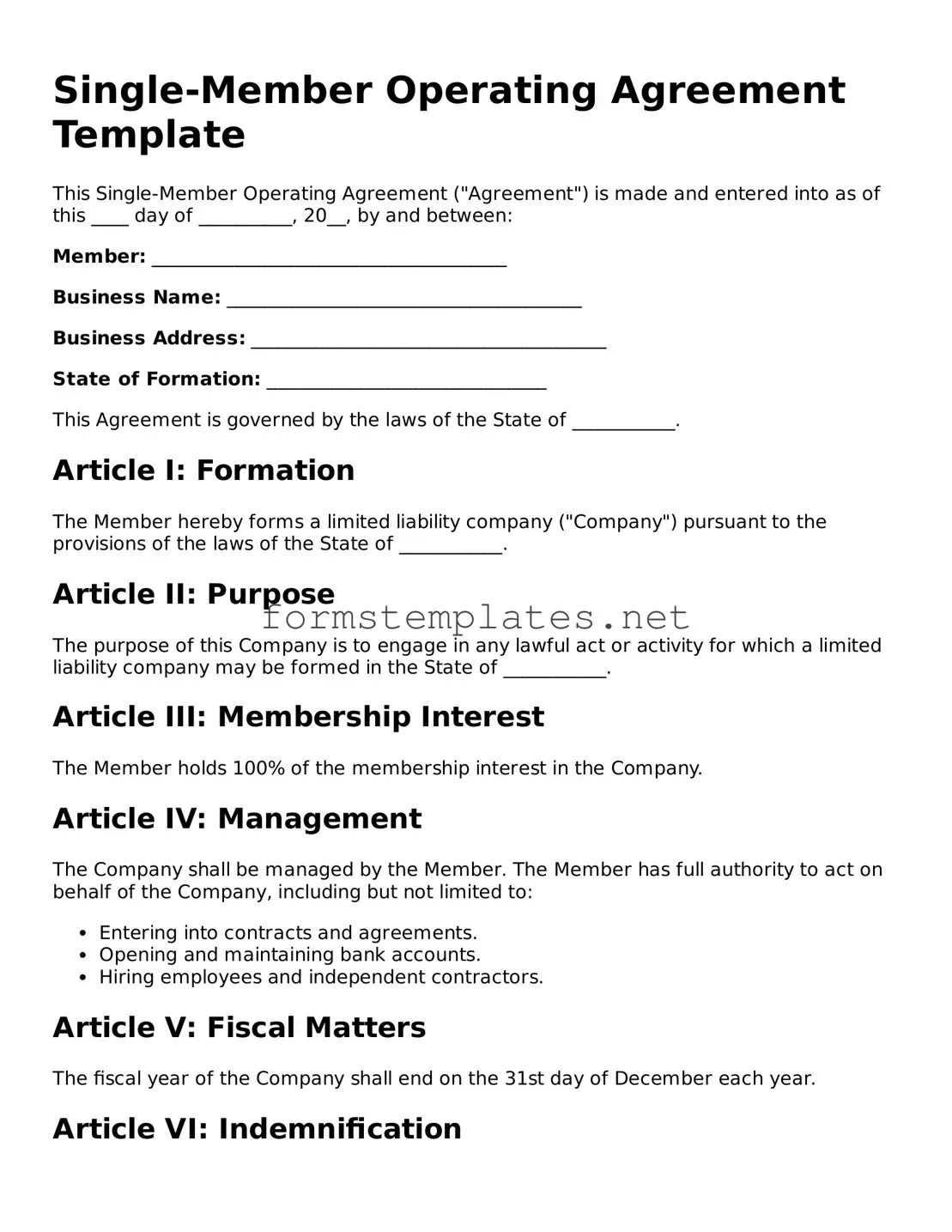Single-Member Operating Agreement Template
This Single-Member Operating Agreement ("Agreement") is made and entered into as of this ____ day of __________, 20__, by and between:
Member: ______________________________________
Business Name: ______________________________________
Business Address: ______________________________________
State of Formation: ______________________________
This Agreement is governed by the laws of the State of ___________.
Article I: Formation
The Member hereby forms a limited liability company ("Company") pursuant to the provisions of the laws of the State of ___________.
Article II: Purpose
The purpose of this Company is to engage in any lawful act or activity for which a limited liability company may be formed in the State of ___________.
Article III: Membership Interest
The Member holds 100% of the membership interest in the Company.
Article IV: Management
The Company shall be managed by the Member. The Member has full authority to act on behalf of the Company, including but not limited to:
- Entering into contracts and agreements.
- Opening and maintaining bank accounts.
- Hiring employees and independent contractors.
Article V: Fiscal Matters
The fiscal year of the Company shall end on the 31st day of December each year.
Article VI: Indemnification
The Company shall indemnify the Member to the fullest extent permitted by the laws of the State of ___________ for any actions taken on behalf of the Company.
Article VII: Amendments
This Agreement may be amended only by a written agreement signed by the Member.
Article VIII: Governing Law
This Agreement shall be governed by and construed in accordance with the laws of the State of ___________.
In Witness Whereof,
the Member has executed this Single-Member Operating Agreement on the day and year first above written.
Signature: ______________________________________
Print Name: ______________________________________
